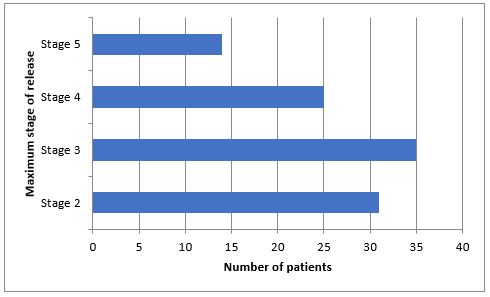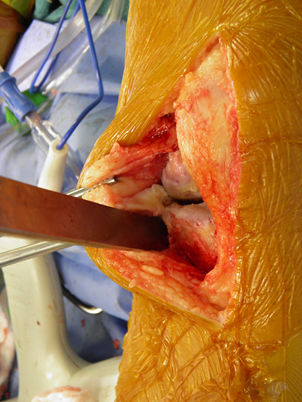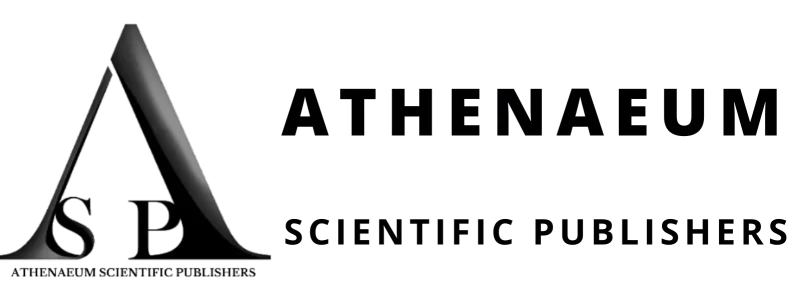Mohamed Elkabbani1, 2*, Kamel Youssef1, Mohamed Ragab2, Omar Ibrahim2, Amr Osman2, Apostu Dragos3, Samih Tarabichi2
1Department of Orthopaedic Surgery, Faculty of Medicine, Mansoura University, 25. El Gomhouria St, 35516 Mansoura, Dakahlia Governorate, Egypt
2Tarabichi Center for Joint Surgery, Burjeel Hospital Dubai, 124412 Dubai, United Arab Emirates
3Department of Orthopaedics and Traumatology, Iuliu Hatieganu University of Medicine and Pharmacy, Cluj-Napoca, Romania
*Corresponding Author: Mohamed Elkabbani, Department of Orthopaedic Surgery, Faculty of Medicine, Mansoura University, 25. El Gomhouria St, 35516 Mansoura, Dakahlia Governorate, Egypt;
Email: [email protected]
Published Date: 14-04-2022
Copyright© 2022 by Elkabbani M, et al. All rights reserved. This is an open access article distributed under the terms of the Creative Commons Attribution License, which permits unrestricted use, distribution, and reproduction in any medium, provided the original author and source are credited.
Abstract
Introduction: Total Knee Replacement (TKA) surgeries are frequently performed surgeries used to treat knee osteoarthritis. Several methods of medial soft tissue balancing in the varus knee during total knee replacement surgeries have been reported. Traditionally, they included releasing the superficial Medial Collateral Ligament (sMCL) in severe varus cases by several methods. However, this release can create instability in the knee. The aim of this study was to create an algorithm for soft tissue release in varus osteoarthritic knees and to evaluate its efficacy in achieving intraoperative gap balancing without releasing the superficial MCL.
Materials and Methods: One hundred and five varus osteoarthritic knees who received primary posterior stabilized total knee arthroplasties between October 2015 and January 2016 were included in this study. Varus deformities ranged between 10 to 40 degrees. Sequential balancing was done into 5 steps: step 1 – releasing of deep MCL, step 2 – excision of osteophytes, step 3 – excision of scarred tissue in the posteromedial corner, step 4 – excision of the posteromedial capsule and step 5 – release of semimembranosus. The V-STAT® Variable Soft Tissue Alignment Tensor was used to ensure a balanced medial and lateral gap following each step. Once the gaps were balanced, no further soft tissue release were carried out.
Results: All knees were balanced without releasing the superficial MCL ligament. The maximum release step necessary was: step 1 (0 cases), step 2 (31 cases), step 3 (35 cases), step 4 (25 cases) and step 5 (14 cases).
Conclusion: Superficial medial collateral ligament should not be released during intraoperative varus knees soft tissue balancing in posterior stabilized total knee arthroplasties. Preserving the superficial MCL is beneficial in maintaining implant stability without any increase in the constraint level of the implant even in cases with severe deformity.
Keywords
Soft Tissue Release; Superficial Medial Collateral Ligament; Posterior Stabilized; Total Knee Arthroplasties
Introduction
Total Knee Arthroplasty (TKA) is a largely successful procedure, relieving pain, restoring function and improving quality of life on a routine basis. One of the key steps in performing an effective TKA is the correction of a varus/valgus deformity and restoring neutral mechanical alignment. This is performed through careful and meticulous release of the soft tissue structures surrounding the knee. Most patients undergoing TKA have a varus deformity, and soft tissue balancing of the varus knee is performed in a sequential fashion until neutral mechanical alignment is restored, as originally described by Insall [1]. Numerous methods of medial soft tissue balancing of the varus knee during total knee arthroplasty have been reported such as release of the tibial insertion of the superficial MCL or pie-crusting of the MCL mid substance, as well as medial epicondylar osteotomy [2,3].
However, this may lead to instability in the knee leading to the use of constrained components [4,5]. This is suboptimal particularly in younger patients, or even intraoperative repair of the MCL, prolonging the surgery which has been associated with a host of complications. Our hypothesis is that in advanced arthritis the posteromedial capsule with the surrounding structures is fibrosed and contracted, unlike the sMCL, as a result freeing it from all these connected structures will help restoring its normal length, and position and thus achieving soft tissue balance in the medial side of the knee. The aim of this study is to describe an algorithm for soft tissue balancing of the varus knee while avoiding the deleterious effects of a sMCL release that may be required in cases with severe varus deformity.
Methods
This is a single institution study. A series of 105 consecutive primary TKAs performed by a single surgeon from October 2015 and January 2016. Inclusion criteria are a preoperative diagnosis of primary osteoarthritis, and a fixed varus deformity. Varus deformities ranged between 10 to 40 degrees. Exclusion criteria included history of previous knee surgery, a diagnosis of inflammatory or post-traumatic arthritis, and valgus deformity. An adductor canal/ femoral nerve block was delivered to all patient preoperatively. All surgeries were performed by a single surgeon, who performs approximately 800-900 TKA annually. All patients had received 1.5 grams of intravenous cefuroxime and 1 gram of intravenous tranexamic acid at the induction of spinal anesthesia. Tourniquet was also applied to the operative extremity. The skin incision and subvastus approach were performed in knee extension, whereas the rest of the surgery was performed in 90 degrees of knee flexion. Once the arthrotomy was performed the degree of deformity was assessed and a deep MCL release performed if determined according to the following algorithm:
Step 1- Release of deep MCL
Step 2 – Bone cuts and removal of osteophytes
Step 3 – Cleaning of posteromedial corner
Step 4 – Excision of posterior capsule
Step 5 – Release of semimembranosus
The sequence was followed until medial and lateral flexion gaps were equal. This was determined using a tensioner (V-STAT tensioner) and laminar spreaders to balance medial and lateral gaps. Cemented cruciate retaining implants (Persona, Zimmer-Biomet. Warsaw, IN) were used in all of them.
Results
One hundred and five consecutive TKA patients were recruited to be in the study. All patients had a fixed varus deformity ranging from 10-40 degrees. All knees were balanced without releasing the superficial MCL ligament as follows (Fig. 1):
- In 31 cases, step 1 and step 2 only were required for soft tissue balancing
- In 35 cases, proceeding to step three was needed
- In 25 cases, progress to step 4 was mandatory (cases with flexion contractures)
- Further release till step 5 was required in 14 cases

Figure 1: Patients’ distribution according to maximum stage of release.
Primary implants were used in all cases. Comparing this to the earlier conventional release we had to use constrained implants in severe cases. Preserving the superficial MCL allowed us to maintain stability and to use primary implants intraoperatively even in cases with severe deformity.
Discussion
Soft tissue balancing is a critical portion in performing a durable total knee arthroplasty. As osteoarthritis progresses, cartilage begins to erode and in later stages of the disease eventually leads to bone loss. Depending on whether a varus or valgus deformity is created, the medial and lateral structures will compensate by contracting or attenuating. As such, this cannot be addressed by simply by performing bony cuts, and many have since gone on to consider total knee arthroplasty as much a soft tissue procedure as it is a bony procedure.
Collateral ligaments do not contract but the opposite collateral ligament may get stretched, however capsule and capsular ligaments contract [6,7]. Contracture of the posterior capsule retracts the superficial MCL backward and prevents full knee extension because full elongation of the MCL is limited. Posteromedial vertical capsulotomy increases the extension gap by separating the sMCL from the contracted posterior capsule thus allowing the sMCL to move freely anteriorly and sufficiently to allow full knee extension (Fig. 2) [8].
Another study showed that the complex anatomy of the posteromedial corner plays a significant role in the deformity as the superficial Medial Collateral Ligament (sMCL) was displaced medially and posteriorly in all severely varus arthritic knees compared to its position in non-arthritic knees [9].

Figure 2: Release of Deep MCL, medial capsule.
Varus deformities represents more than 90% of cases performing total knee arthroplasty [10]. Several soft tissue balance algorithms have been postulated for such cases, with variable results. Releasing the deep MCL up to the semimembranosus tibial insertion has been recommended by several authors, others performed downsizing and lateralizing the tibial component with tibial reduction osteotomy to achieve balance [11,12]. Others described releasing the superficial MCL from its distal tibial attachment (dis- insertion) or pie-crusting of the superficial MCL or even performing a medial epicondylar osteotomy [11-18].
Kwak, et al., noticed uncontrolled gap opening with over release in 70% of cases. Gap measurement increments of 1-3 mm in extension and 2-6 mm in flexion were reported [19]. Meneghini, et al., questioned the safety of the pie-crusting technique, observing a “stair-step” failure at the joint line [20]. Those who recommended medial epicondylar osteotomy did not report any instability despite high incidence of fibrous union of the osteotomy [17,18,21]. Mihalko, et al., noticed increased coronal and transverse plane laxity at 60 and 90 of flexion with medial epicondylar osteotomy with subsequent increased need for constrained implants [22,23].
The aim of this study was to determine if the algorithm proposed would serve to adequately balance soft tissues in total knee arthroplasty in patient with a severe varus deformity, thereby preserving soft tissue structures that are critical to knee stability. As originally described by Insall, the release of medial soft tissue structures was performed incrementally, and the adequacy of release was determined using laminar spreaders in the medial and lateral compartments [1]. The classic order of this release is deep Medial Collateral Ligament (MCL) and Posterior Oblique Ligament (POL) release, semimembranosus release, posterior capsule release, superficial MCL release, and pes anserinus tendon release in a sequential manner. The latter stages of the release are rarely applied as most cases will not have a varus deformity that warrants such an extensive release (Fig. 3).

Figure 3: Release of posteromedial corner.
As we have alluded to previously, our patient population routinely presents with advanced disease and releasing the superficial and deep MCL would only serve to destabilize the knee and would not act unlike an intraoperative MCL injury requiring intraoperative repair or the use of constrained components. Thus, earlier algorithms proposed may not be applicable in populations where severe varus deformity is routinely encountered. With this algorithm we have been able to routinely implant primary components without over- releasing medial structures. We believe that the success of this algorithm lies primarily in that the posteromedial corner, which is frequently under-released structure, with surgeons focusing primarily on the posterior oblique ligament and moving onto the release of other structures in the medial release algorithm. We argue that release of the superficial MCL is avoidable in most cases and was not performed in this series, in which we had patients with up to 40 degrees of varus deformity. Clearing the superficial MCL from these surrounding pathological tissues -not releasing it- will help restore its normal shape, length, and position, allowing us to balance varus knees intraoperatively without creating instability (Fig. 4).
This study is not without its limitations. This was a case series with no comparison to other algorithms described in the literature. As this study only applied sequential release of the structures as described in the Methods chapter in order to obtain a good flexion and extension balance as tested with the V-STAT Tensioner, no control group is needed. Since we have no control group, we cannot calculate other statistical parameters such as Student T test of Pearson correlation coefficient. Furthermore, we did not quantify the release performed on the posteromedial corner. Moreover, biomechanical or cadaveric studies may be necessary to better determine the quantitative effect of our release. Finally, this algorithm may not be applicable to surgeons who serve populations with milder deformity where superficial MCL release would be highly unlikely event. This is intended for surgeons who routinely must perform extensive soft tissue releases to obtain a balanced knee. In conclusion, we believe this algorithm may provide a viable alternative to classic teachings where the superficial MCL may be routinely released in cases of severe varus deformity.

Figure 4: Posteromedial corner has been cleared, with superficial MCL still intact.
Conclusion
Superficial medial collateral ligament should not be released during intraoperative varus knees soft tissue balancing in posterior stabilized total knee arthroplasties. Preserving the superficial MCL is beneficial in maintaining implant stability without any increase in the constraint level of the implant even in cases with severe deformity.
Conflict of Interest
The authors declare that they have no conflict of interest. This study has been approved by the Local Institutional Ethical Committee and was performed in accordance with the ethical standards laid down in the 1964 Declaration of Helsinki and its later amendments.
References
- Yasgur DJ, Scuderi GR, Insall JN, Scuderi GR, Tria AJ. Medial release for fixed-varus deformity. surgical techniques in total knee arthroplasty. New York, NY: Springer. 2002:189e196.
- Mihalko WM, Saleh KJ, Krackow KA, Whiteside LA. Softtissue balancing during total knee arthroplasty in the varus knee. J Am Acad Orthop Surg. 2009;17:766-74.
- Kwak DS, In Y, Kim TK, Cho HS, Koh IJ. The pie-crusting technique using a blade knife for medial collateral ligament release is unreliable in varus total knee arthroplasty. Knee Surg Sports Traumatol Arthrosc. 2016;24:188-94.
- Bellemans J. Multiple needle puncturing: balancing the varus knee. Orthoped. 2011;34:e510-2.
- Chang MJ, Lim H, Lee NR, Moon YW. Diagnosis causes and treatments of instability following total knee arthroplasty. Knee Surg Relat Res. 2014;26:61-7.
- Okamoto S, Okazaki K, Mitsuyasu H, Matsuda S, Iwamoto Y. Lateral soft tissue laxity increases but medial laxity does not contract with varus deformity in total knee arthroplasty. Clin Orthop Relat Res. 2013;471(4):1334-42.
- Mullaji AB, Shetty GM. Correcting deformity in total knee arthroplasty. The Bone & Joint J. 2016;98(1):101-4.
- Kaneyama R, Shiratsuchi H, Oinuma K, Higashi H, Miura Y,Tamaki T. Posteromedial vertical capsulotomy increases the medial extension gap in total knee arthroplasty. Orthop Proc. 2018.
- Mohamed Elkabbani, Amr Osman, Amr M Khater, Mohamed Helaly, Samih Tarabichi. Evaluation of the pathological anatomy of posteromedial corner in varus osteoarthritic knees using magnetic resonance imaging. J Arthro Joint Surg. 2021.
- Chou PH, Chen WM, Chen CF et al. Clinical Comparison of valgus and varus deformities in primary total knee arthroplasty following midvastus approach. J Arthroplasty. 2012;4:604.
- Laskin RS, Schob CJ. Medial capsular recession for severe varus deformities. J Arthroplasty. 1987;2:313.
- Dixon MC, Parsch D, Brown RR, Scott RD. The correction of severe varus deformity in total knee arthroplasty by tibial component downsizing and resection of uncapped proximal medial bone. The J Arthroplasty. 2004;19(1):19-22.
- Meftah M, Blum YC, Raja D, Ranawat AS, Ranawat CS. Correcting fixed varus deformity with flexion contracture during total knee arthroplasty: the “inside-out” technique: AAOS exhibit selection. JBJS. 2012;94(10):e66.
- Verdonk PC, Pernin J, Pinaroli A, Selmi AS, Neyret P. Soft tissue balancing in varus total knee arthroplasty: an algorithmic approach. Knee Surg Sports Traumatol Arthrosc. 2009;17(6):660-6.
- Bellemans J, Vandenneucker H, Van Lauwe J, Victor J. A new surgical technique for medial collateral ligament balancing: multiple needle puncturing. J Arthroplasty. 2010;25(7):1151-6.
- Yagishita K, Muneta T, Ikeda H. Step-by-step measurements of soft tissue balancing during total knee arthroplasty for patients with varus knees. J Arthroplasty. 2003;18:313-20.
- Ranawat AS, Ranawat CS, Elkus M, Rasquinja VJ, Rossi R, Babhulkar S. total Knee Arthroplasty for severe valgus deformity. J Bone Joint Surg Am. 2005;87(2):272-84.
- Engh GA, Ammeen D. Results of total knee arthroplasty with medial epicondylar osteotomy to correct varus deformity. Clin Orthop Relat Res. 1999;367(1):141-8.
- Kwak DS, In Y, Kim TK, ChoHS, Koh IJ. The pie-crusting technique using a blade knife for medial collateral ligament release is unreliable in varus total knee arthroplasty. Knee Surg Sports Traumatol Arthrosc. 2016;24(1):188-94.
- Meneghini RM, Daluga AT, Sturgis LA, Lieberman JR. Is the pie-crusting technique safe for MCL release in varus deformity correction in total knee arthroplasty? J Arthroplasty. 2013;28(8):1306-9.
- Stan G. Medial epicondyle osteotomy for balancing severe varus knee. Knee Surgery-Reconstruction and Replacement. 2019.
- Mihalko WM, Woodard EL, Hebert CT, Crockarell JR, Williams JL. Biomechanical validation of medial pie-crusting for soft tissue balancing in knee arthroplasty. J Arthroplasty. 2015;30(2):296-9.
- Mihalko WM, Saeki K, Whiteside LA, Effect of medial epicondylar osteotomy on soft tissue balancing in total knee arthroplasty. Orthopedics. 2013;36:e1353-7.
Article Type
Research Article
Publication History
Received Date: 18-03-2022
Accepted Date: 07-04-2022
Published Date: 14-04-2022
Copyright© 2022 by Elkabbani M, et al. All rights reserved. This is an open access article distributed under the terms of the Creative Commons Attribution License, which permits unrestricted use, distribution, and reproduction in any medium, provided the original author and source are credited.
Citation: Elkabbani M, et al. Soft Tissue Release for Varus Knees during Posterior Stabilized Total Knee Arthroplasty: A New Algorithm. J Ortho Sci Res. 2022;3(1):1-9.

Figure 1: Patients’ distribution according to maximum stage of release.

Figure 2: Release of Deep MCL, medial capsule.

Figure 3: Release of posteromedial corner.

Figure 4: Posteromedial corner has been cleared, with superficial MCL still intact.


